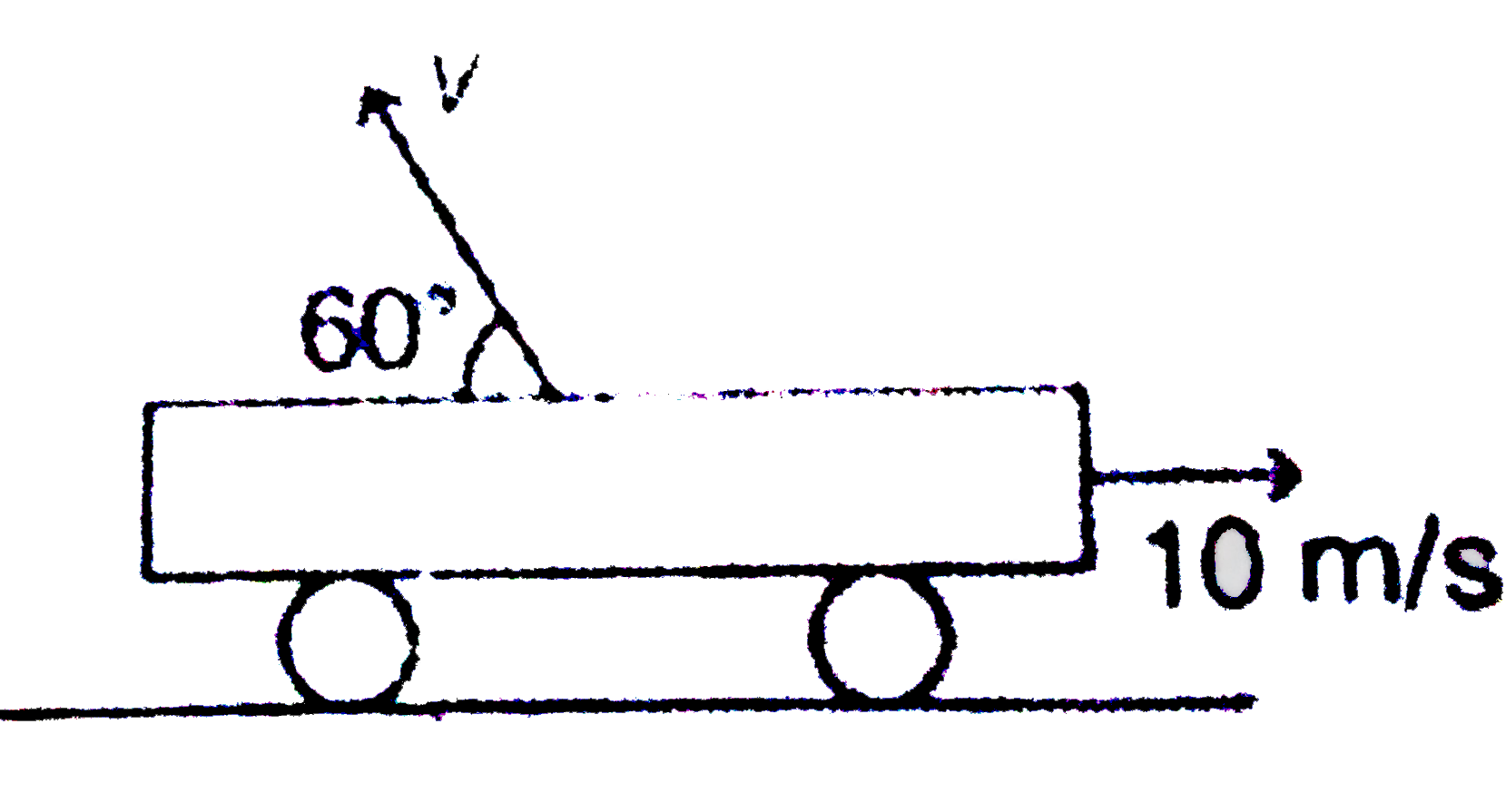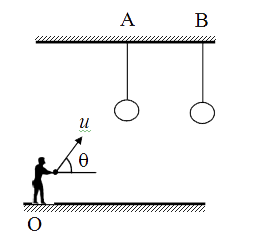A boy throws n balls per second at regular time intervals. When the first ball reaches the maximum height he throws the second one vertically up. The maximum height reached by each ball is
g2(n−1)2
g2n2
gn2
gn
The correct Answer is:B
To solve the problem step by step, let's break it down:
Step 1: Understand the Problem
A boy throws n balls per second at regular intervals. When the first ball reaches its maximum height, he throws the second ball. We need to find the maximum height reached by each ball.
Step 2: Determine the Time Interval Between Throws
Since the boy throws n balls in one second, the time interval t between two successive throws is given by:
t=1n seconds
Step 3: Use Kinematic Equations
To find the maximum height reached by the balls, we need to determine the initial velocity u of the balls. At maximum height, the final velocity v of the ball is 0 m/s. The acceleration a acting on the ball is due to gravity, which is −g (acting downwards).
Using the kinematic equation:
v=u+at
Substituting the known values:
0=u−gt
Rearranging gives:
u=gt
Step 4: Substitute the Time Interval
We know from Step 2 that t=1n. Substituting this into the equation for u:
u=g(1n)=gn
Step 5: Calculate the Maximum Height
The formula for the maximum height hmax reached by a ball thrown vertically is:
hmax=u22g
Substituting u=gn:
hmax=(gn)22g
This simplifies to:
hmax=g22n2g=g2n2
Final Answer
Thus, the maximum height reached by each ball is:
hmax=g2n2
A boy throws n balls per second at regular intervals. When the first ball reaches its maximum height, he throws the second ball. We need to find the maximum height reached by each ball.
Since the boy throws n balls in one second, the time interval t between two successive throws is given by:
t=1n seconds
To find the maximum height reached by the balls, we need to determine the initial velocity u of the balls. At maximum height, the final velocity v of the ball is 0 m/s. The acceleration a acting on the ball is due to gravity, which is −g (acting downwards).
v=u+at
Substituting the known values:
0=u−gt
Rearranging gives:
u=gt
We know from Step 2 that t=1n. Substituting this into the equation for u:
u=g(1n)=gn
The formula for the maximum height hmax reached by a ball thrown vertically is:
hmax=u22g
Substituting u=gn:
hmax=(gn)22g
This simplifies to:
hmax=g22n2g=g2n2
Thus, the maximum height reached by each ball is:
hmax=g2n2
Topper's Solved these Questions
- BOOK - AAKASH SERIESCHAPTER - MOTION IN A STRAIGHT LINE EXERCISE - PRACTICE EXERCISE58videos
MOTION IN A STRAIGHT LINE
- BOOK - AAKASH SERIESCHAPTER - MOTION IN A STRAIGHT LINE EXERCISE - problems47videos
MOTION IN A STRAIGHT LINE
- BOOK - AAKASH SERIESCHAPTER - MOTION IN A STRAIGHT LINE EXERCISE - EXERCISE -I58videos
MOTION IN A STRAIGHT LINE
- BOOK - AAKASH SERIESCHAPTER - MOTION IN A PLANEEXERCISE - QUESTION FOR DESCRIPTIVE ANSWER7videos
MOTION IN A PLANE
- BOOK - AAKASH SERIESCHAPTER - MOVING CHARGES AND MAGNETISMEXERCISE - EXERCISE-III49videos
MOVING CHARGES AND MAGNETISM
Similar Questions
A boy throws a ball in air in such a manner that when the ball is at its maximum height he throws another ball. If the balls are thrown with the time difference 1 second, the maximum height attained by each ball is
View SolutionA body is thrown vertically up reaches a maximum height of 78.4 m. After what time it will reach the ground from the maximum height reached ?
View Solution
Knowledge Check
- Question 1 - Select One
In the question number 62. the maximum height attained by the ball is
A11.25 mB48.2 mC23. 5 mD68 m - Question 2 - Select One
A particle is projected vertically upwards and it reaches the maximum height H in time T seconds. The height of the particle at any time t will be-
Ag(t−T)2BH−12g(t−T)2C12g(t−T)2DH−g(t−T)2
The directioin of projection of particle is shown in the figure for an observer on trolley. An observer on the grond sees the ball rising vertically. The maximum height reached by the ball as seen from the troelley is
 View Solution
View SolutionTwo rings are suspended from the points A and B on the ceiling of a room with the help of strings of length 1.2 m each as shown. The points A and B are separated from each other by a distance AB = 1.2 m. A boy standing on the floor throws a small ball so that it passes through the two rings whose diameter is slightly greater than the ball. At the moment when the boy throws the ball, his hand is at a height of 1.0 m above the floor. A stop watch which is switched on at the moment of throwing the ball reads 0.2 s when the ball passes through the first ring and 0.6 s when it passes through the second ring.

The maximum height attained by the ball above the floor is:View SolutionA ball is projected vertically up such that it passes thorugh a fixed point after a time t1 and t2 respectively. Find
a. The height at which the point is located with respect to the point of projeciton
b. The speed of projection of the ball.
c. The velocity the ball at the time of passing through point P.
d. (i) The maximum height reached by the balll relative to the point of projection A (ii) maximum height reached by the ball relative to point P under consideration.
e. The average speed and average velocity of the ball during the motion from A to P for the time t1 and t2 respectively.
 .View Solution
.View SolutionA ball is thrown up at a speed of 4.0 m/s. Find the maximum height reached by the ball. Take g=10m/s2.
View SolutionA ball is thrown at a speed of 20 m/s at an angle of 30∘ with the horizontal . The maximum height reached by the ball is
(Use g=10m/s2)View SolutionA cricket player throws the ball to have the maximum horizontal range of 120m. If the throws the ball vertically with same velocity what is the maximum height it can reach ?
View Solution

